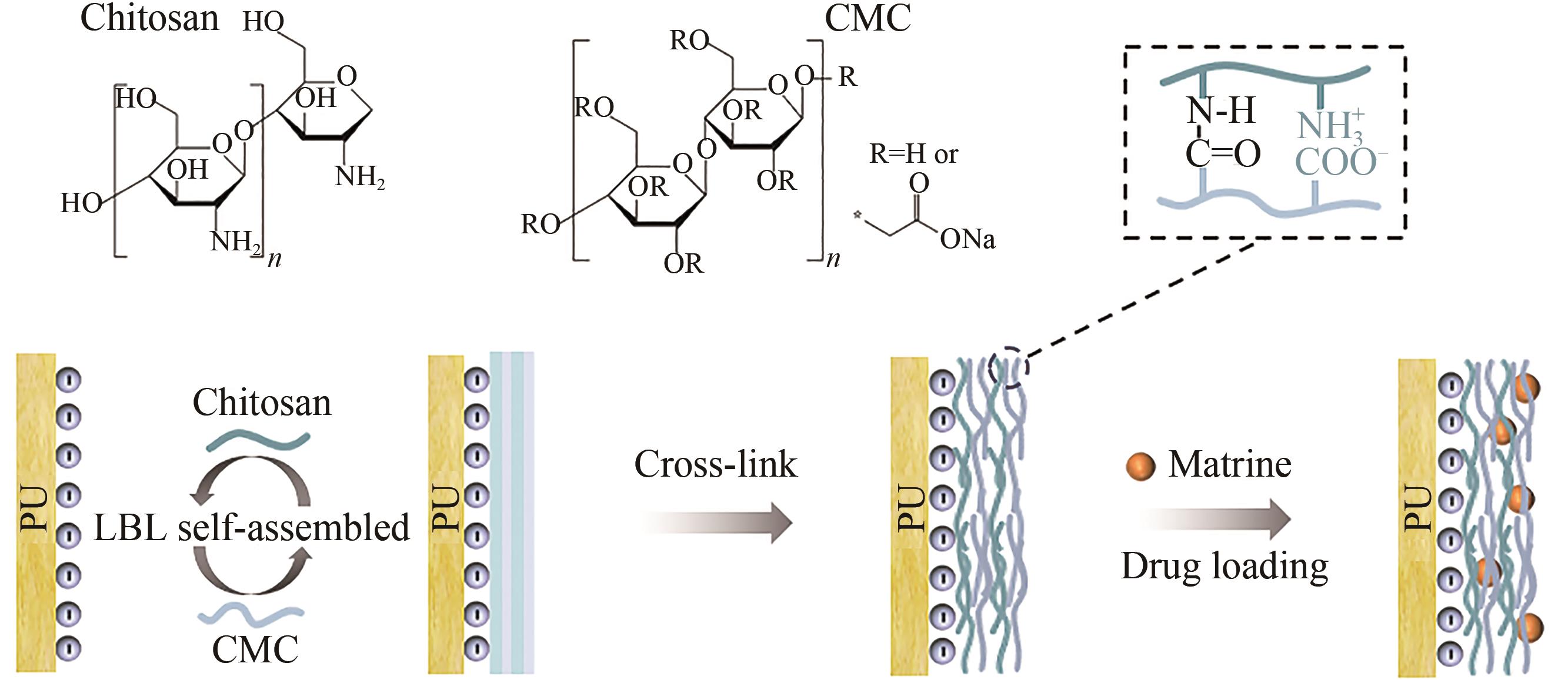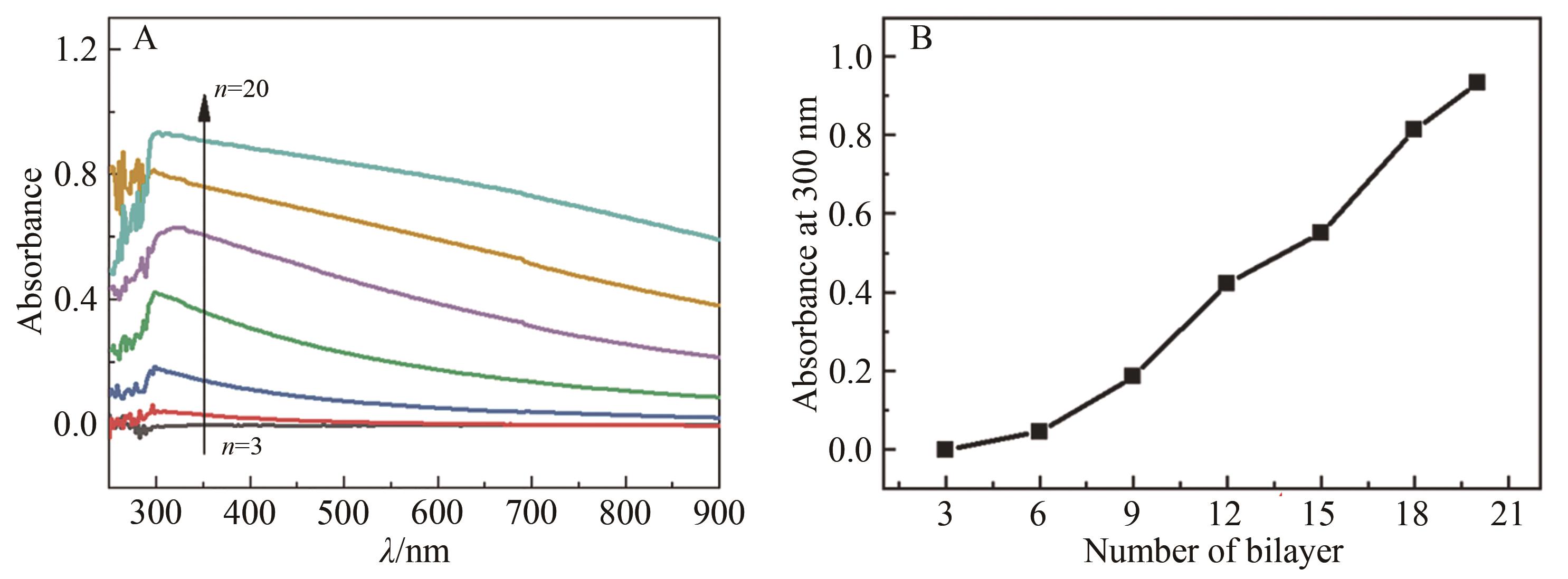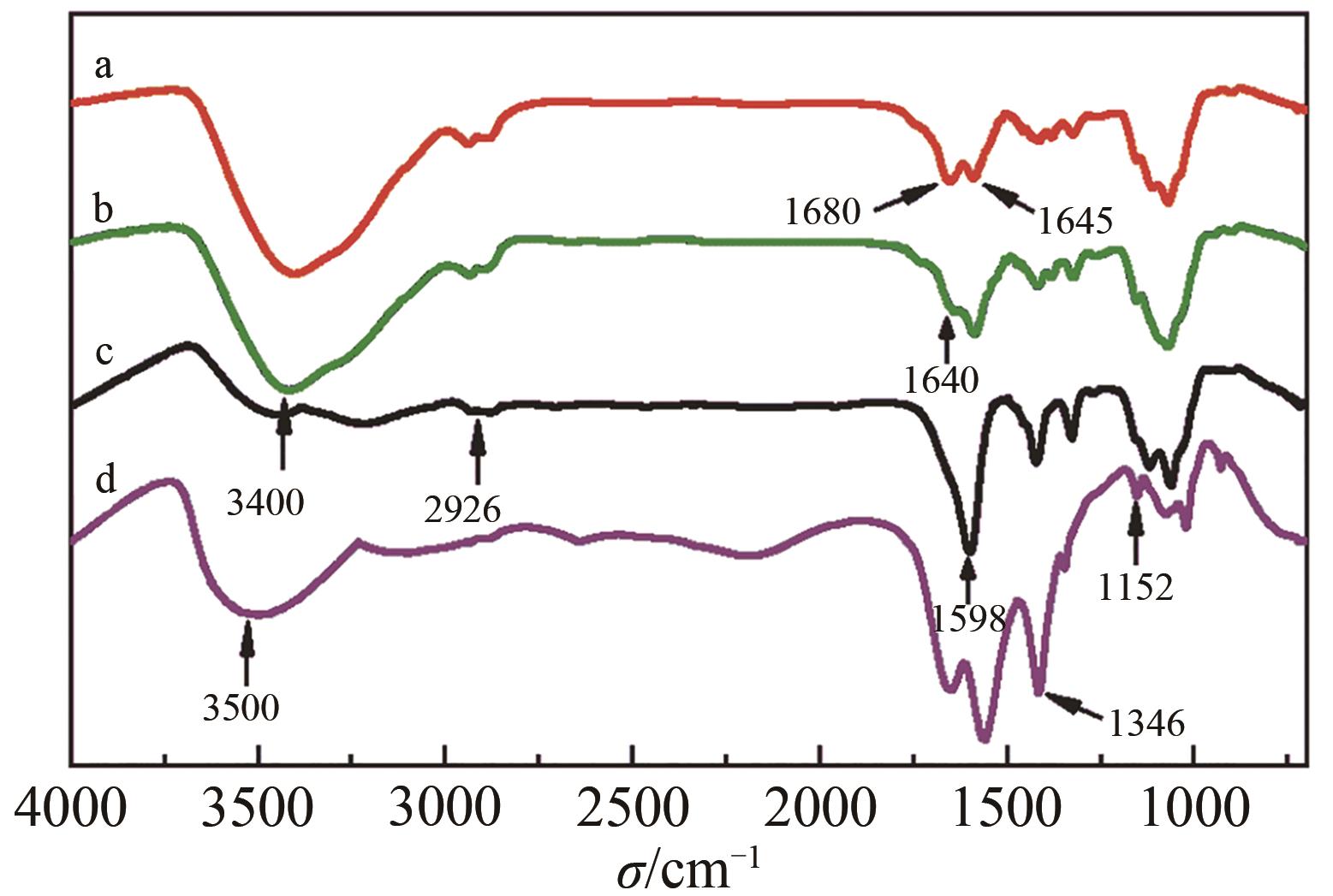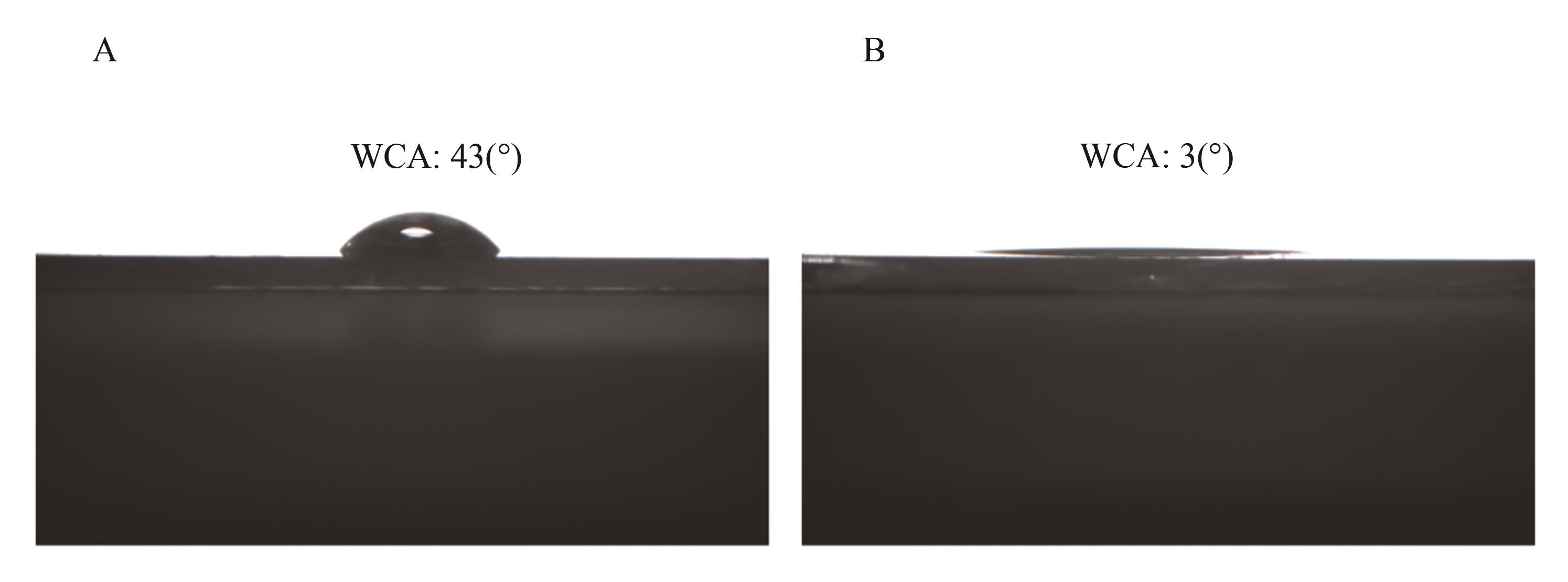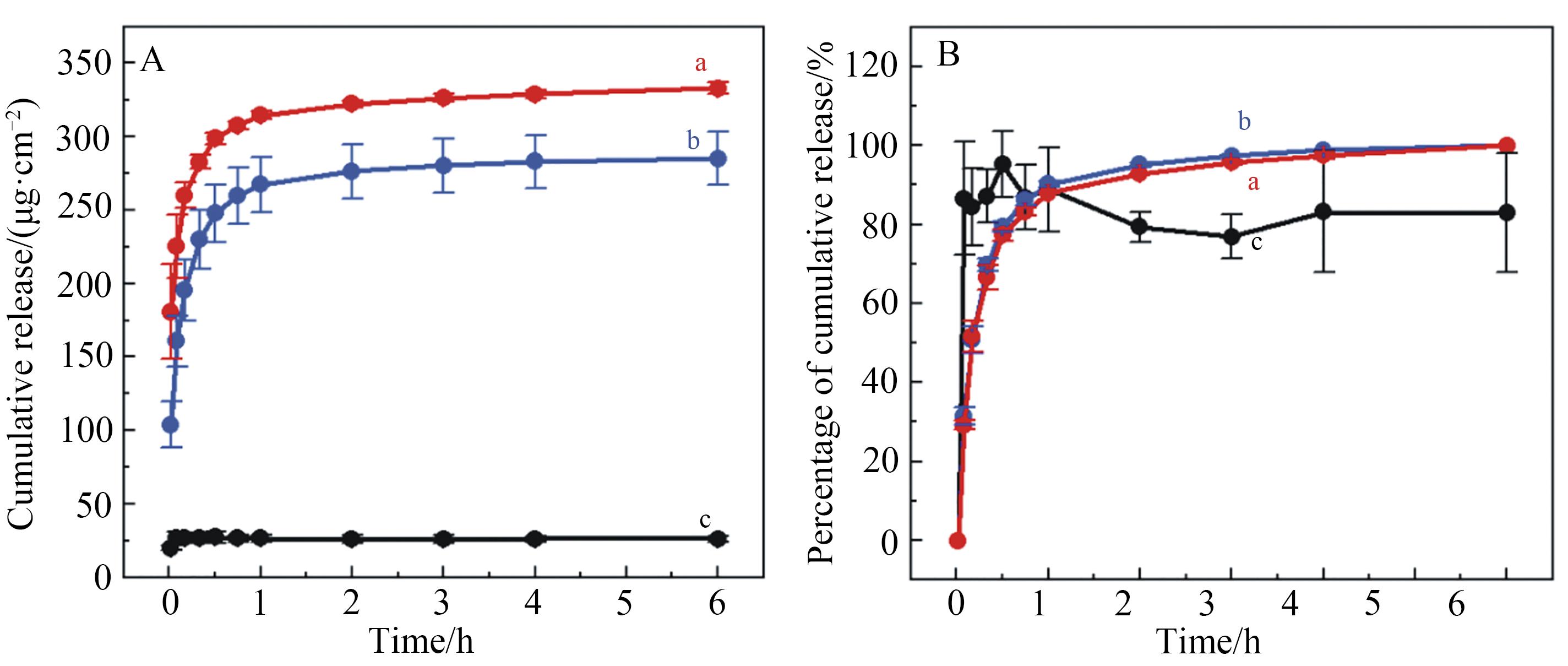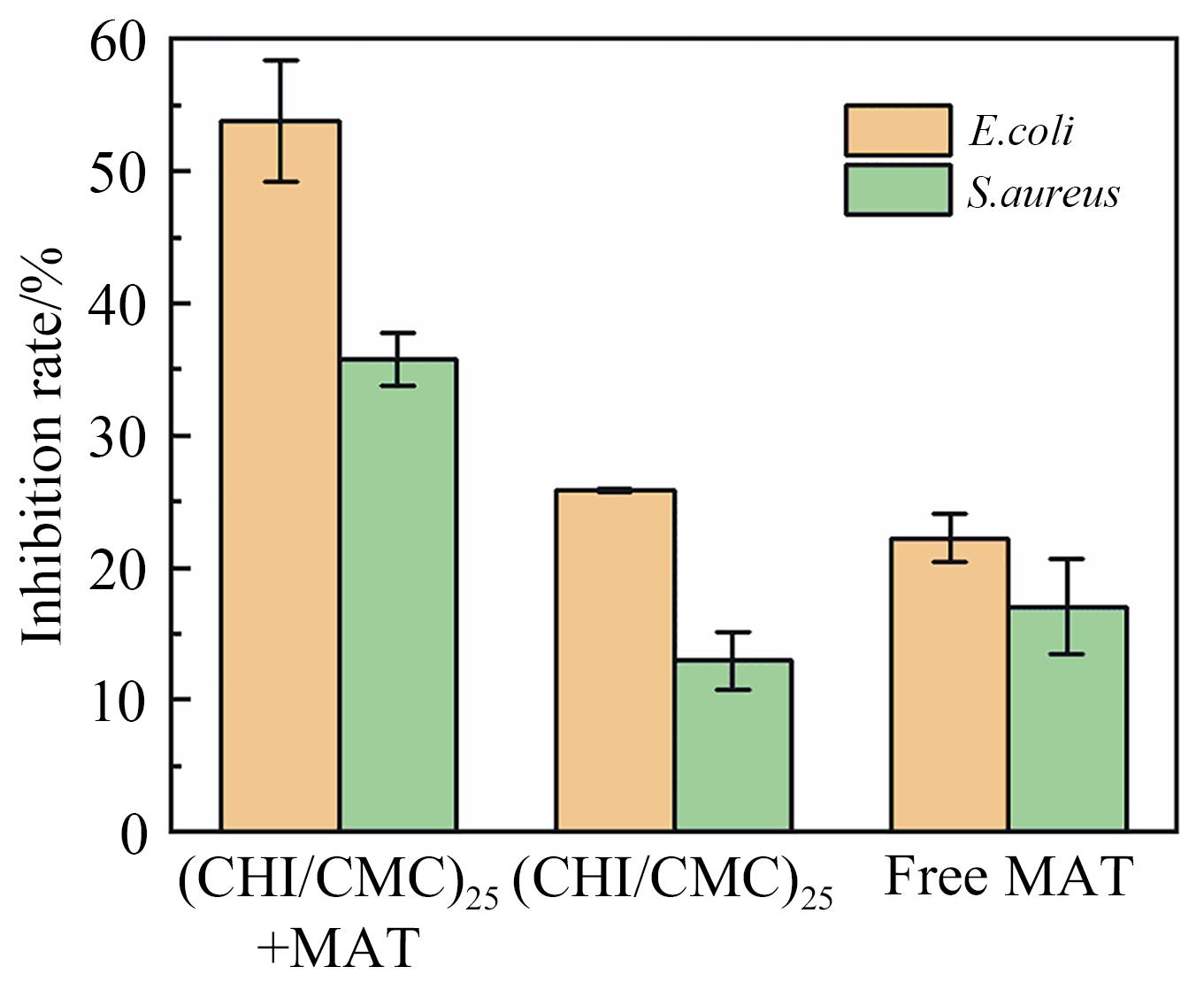
Chinese Journal of Applied Chemistry ›› 2023, Vol. 40 ›› Issue (2): 252-260.DOI: 10.19894/j.issn.1000-0518.220164
• Full Papers • Previous Articles Next Articles
Polyurethane Dressing Based on Antibacterial Chitosan/Carboxymethyl Cellulose Composite Drug Coating
Yu-Zhu CHEN, Si-Si LIU, Meng-Meng ZHANG, Xiang-De LIN( ), Dong-Dong ZENG(
), Dong-Dong ZENG( )
)
- School of Medical Devices,Shanghai University of Medicine & Health Science,Shanghai 201318,China
-
Received:2022-05-01Accepted:2022-08-30Published:2023-02-01Online:2023-02-27 -
Contact:Xiang-De LIN,Dong-Dong ZENG -
About author:zengdd@sumhs.edu.cn;
linxd@sumhs.edu.cn
-
Supported by:the Natural Science Foundation of Shanghai(22008151);the National Natural Science Foundation of China(19ZR1474300);the High-level Local University Construction Project of shanghai University of Medicine & Health Sciences(E1-2602-21-201006-1)
CLC Number:
Cite this article
Yu-Zhu CHEN, Si-Si LIU, Meng-Meng ZHANG, Xiang-De LIN, Dong-Dong ZENG. Polyurethane Dressing Based on Antibacterial Chitosan/Carboxymethyl Cellulose Composite Drug Coating[J]. Chinese Journal of Applied Chemistry, 2023, 40(2): 252-260.
share this article
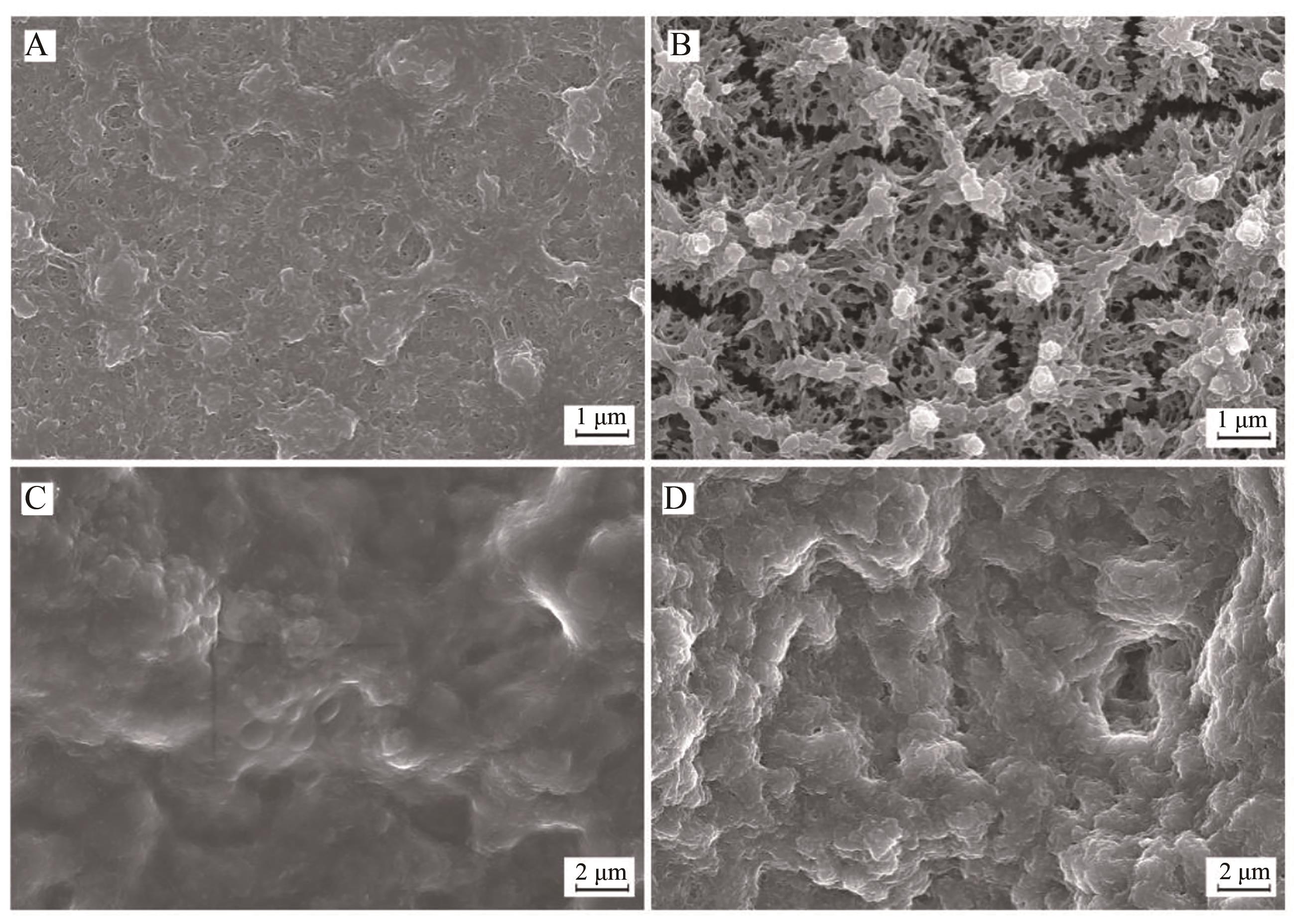
Fig.4 SEM images of (A) (CHI/CMC)25 coating, (B) Crosslinked (CHI/CMC)25 coating, (C) Polyurethane substrate (CHI/CMC)10 coating and (D) Polyurethane substrate crosslinked (CHI/CMC)10 coating
| Breaking time/min | Standard strain/mm | Elongation after fracture/% | Maximum failure load/N | Tensile strength/MPa | |
|---|---|---|---|---|---|
| PETG | 87.3 | 130.9 | 3.3 | 233.1 | 45.8 |
| PETG-(CHI/CMC)10 | 109.2 | 163.7 | 3.8 | 240.5 | 48.1 |
Table 1 Mechanical properties of chemical crosslinked coatings
| Breaking time/min | Standard strain/mm | Elongation after fracture/% | Maximum failure load/N | Tensile strength/MPa | |
|---|---|---|---|---|---|
| PETG | 87.3 | 130.9 | 3.3 | 233.1 | 45.8 |
| PETG-(CHI/CMC)10 | 109.2 | 163.7 | 3.8 | 240.5 | 48.1 |
| 1 | BANDI S P, BHATNAGAR S, VENUGANTI V V K. Advanced materials for drug delivery across mucosal barriers[J]. Acta Biomater, 2021, 119: 13-29. |
| 2 | TYAN Y C, YANG M H, CHANG C C, et al. Biocompatibility of materials for biomedical engineering[J]. Adv Exp Med Biol, 2020, 1250: 125-140. |
| 3 | ZHOU Y, LIU G T, HUANG H, et al. Advances and impact of arginine-based materials in wound healing[J]. J Mater Chem B, 2021, 9(34): 6738-6750. |
| 4 | LIU T W, YAN S J, ZHOU R T, et al. Self-adaptive antibacterial coating for universal polymeric substrates based on a micrometer-scale hierarchical polymer brush system[J]. ACS Appl Mater Interfaces, 2020, 12(38): 42576-42585. |
| 5 | ZHAO C W, ZHOU L, CHIAO M, et al. Antibacterial hydrogel coating: strategies in surface chemistry[J]. Adv Colloid Interface Sci, 2020, 285: 102280. |
| 6 | YUAN P Y, QIU X Y, WANG X R, et al. Substrate-independent coating with persistent and stable antifouling and antibacterial activities to reduce bacterial infection for various implants[J]. Adv Healthc Mater, 2019, 8(8): e1801423. |
| 7 | CRIADO-GONZALEZ M, IQBAL M H, CARVALHO A, et al. Surface triggered self-assembly of fmoc-tripeptide as an antibacterial coating[J]. Front Bioeng Biotechnol, 2020, 8: 938. |
| 8 | WATARI S, WADA K, ARAKI M, et al. Intraluminal diamond-like carbon coating with anti-adhesion and anti-biofilm effects for uropathogens: a novel technology applicable to urinary catheters[J]. Int J Urol, 2021, 28(12): 1282-1289. |
| 9 | KANEKOO T, SAITO T, SHOBUIKE T, et al. 2-Methacryloyloxyethyl phosphorylcholine polymer coating inhibits bacterial adhesion and biofilm formation on a suture: an in vitro and in vivo study[J]. Biomed Res Int, 2020, 2020(4): 1-8. |
| 10 | 王学斌, 薛源, 周耀武, 等. 光交联交替层状自组装(LBL)抗菌膜的制备及其性能研究[J]. 高分子学报, 2022, 53(2): 133-144. |
| WANG X B, XUE Y, ZHOU Y W, et al. Preparation and characterization of photo-crosslinked layer-by-layer(LBL) self-assembled antibacterial films[J]. Acta Polym Sin, 2022, 53(2): 133-144. | |
| 11 | ALKEKHIA D, HAMMOND P T, SHUKLA A. Layer-by-layer biomaterials for drug delivery[J]. Annu Rev Biomed Eng, 2020, 22: 1-24. |
| 12 | 张帅, 黄燕萍, 赵国敏, 等. 基于层层自组装技术的复合聚电解质及其应用研究进展[J]. 材料工程, 2020, 48(12): 12-23. |
| ZHANG S, HUANG Y P, ZHAO G M, et al. Research progress in polyelectrolyte complexes based on layer-by-layer self-assembly technology and their applications[J]. J Mater Eng, 2020, 48(12): 12-23. | |
| 13 | SARODE A, ANNAPRAGADA A, GUO J L, et al. Layered self-assemblies for controlled drug delivery: a translational overview[J]. Biomaterials, 2020, 242: 119929. |
| 14 | WU J, WANG X, ZHU B, et al. pH-sensitive magnetic drug delivery system via layer-by-layer self-assembly of CS/PEG and its controlled release of DOX[J]. J Biomater Sci Polym Ed, 2020, 31(8): 1057-1070. |
| 15 | PANAPIMONLAWAT T, PHANICHPHANT S, SRIWICHAI S. Electrochemical dopamine biosensor based on poly(3-aminobenzylamine) layer-by-layer self-assembled multilayer thin film[J]. Polymers, 2021, 13(9): 1488. |
| 16 | 段婷婷, 郑威, 刘秀菊, 等. 层层自组装技术在薄膜制备方面的研究进展[J]. 工程塑料应用, 2017, 338(12): 139-142. |
| DUAN T T, ZHENG W, LIU X J, et al. Research progress of layer-by-layer self-assembly technology in preparation of thin films[J]. Eng Plas Appl, 2017, 338(12): 139-142. | |
| 17 | SHI Q, QIAN Z, LIU D, et al. Surface modification of dental titanium implant by layer-by-layer electrostatic self-assembly[J]. Front Physiol, 2017, 8: 574. |
| 18 | HAN M, DONG Z, LI J, et al. Mussel-inspired self-assembly engineered implant coatings for synergistic anti-infection and osteogenesis acceleration[J]. J Mater Chem B, 2021, 9(40): 8501-8511. |
| 19 | 邸金威, 杜祎萌, 高翔, 等. 逐层自组装技术在药物递送中的研究进展[J]. 药学学报, 2020, 55(11): 2595-2605. |
| DI J W, DU Y M, GAO X, et al. Research progress of layer-by-layer self-assembly technology in drug delivery[J]. Acta Pharm Sin, 2020, 55(11): 2595-2605. | |
| 20 | MALLAKPOUR S, TUKHANI M, HUSSAIN C M. Recent advancements in 3D bioprinting technology of carboxymethyl cellulose-based hydrogels: utilization in tissue engineering[J]. Adv Colloid Interface Sci, 2021, 292: 102415. |
| 21 | WANG W Q, MENG Q Y, LI Q, et al. Chitosan derivatives and their application in biomedicine[J]. Int J Mol Sci, 2020, 21(2). |
| 22 | MATICA M A, AACHMANN F L, TØNDERVIK A, et al. Chitosan as a wound dressing starting material: antimicrobial properties and mode of action[J]. Int J Mol Sci, 2019, 20(23). |
| 23 | PARK S, CHOI D, JEONG H, et al. Drug loading and release behavior depending on the induced porosity of chitosan/cellulose multilayer nanofilms[J]. Mol Pharm, 2017, 14(10): 3322-3330. |
| 24 | LI M, LI H Q, PAN Q X, et al. Graphene oxide and lysozyme ultrathin films with strong antibacterial and enhanced osteogenesis[J]. Langmuir, 2019, 35(20): 6752-6761. |
| 25 | 孟治平. 盐酸小檗碱吸入制剂的制备及其治疗呼吸道金黄色葡萄球菌感染的研究[D]. 南京: 南京中医药大学, 2021. |
| MENG Z P. Preparation of berberine hydrochloride inhalation and study on the treatment of respiratory tract Staphylococcus aureus infection[D]. Nanjing: Nanjing University of Chinese Medicine, 2021. | |
| 26 | PARK S, KIM H H, YANG S B, et al. A polysaccharide-based antibacterial coating with improved durability for clear overlay appliances[J]. ACS Appl Mater Interfaces, 2018, 10(21): 17714-17721. |
| 27 | 何显运, 徐勇军, 原波. 功能性聚氨酯表面层层自组装透明质酸和胶原[J]. 工程塑料应用, 2022, 388(2): 50-54. |
| HE X Y, XU Y J, YUAN B. Layer-by-layer assembly of hyaluronic acid and collagen on functional polyurethane surface[J]. Eng Plas Appl, 2022, 388(2): 50-54. | |
| 28 | ISMAIL M F, ISLAM M A, KHORSHIDI B, et al. Surface characterization of thin-film composite membranes using contact angle technique: review of quantification strategies and applications[J]. Adv Colloid Interface Sci, 2022, 299: 102524. |
| 29 | CHIEN H W, LIN H Y, TSAI C Y, et al. Superhydrophilic coating with antibacterial and oil-repellent properties via NaIO4-triggered polydopamine/sulfobetaine methacrylate polymerization[J]. Polymers, 2020, 12(9):2008. |
| 30 | 赵赫. 苦参碱对外膜蛋白A过表达大肠杆菌体外生物被膜形成影响的研究[D].西宁: 广西医科大学, 2018. |
| ZHAO H. Influencing factors of in vitro biofilm formation of E.coli with over expression of maternal membrane proteina[D]. Xining: Guangxi Medical University, 2018. | |
| 31 | 殷茂力. 壳聚糖基抗菌医用材料的构建与性能研究[D]. 无锡: 江南大学, 2021. |
| YIN M L. Construction and properties of chitosan-based antibacterial biomedical materials[D]. Wuxi: Jiangnan University, 2021. |
| [1] | GUO Rui, SAI Mingze, ZHANG Min, ZHONG Shiliang, MA Wentao, CHEN Lei, DING Derun. Preparation and Performance of Chitosan Grafted Polyvinyl Pyrrolidone Film with Iodine [J]. Chinese Journal of Applied Chemistry, 2015, 32(5): 498-503. |
| [2] | LIU Zhongcheng, NI Xuepeng, NIU Ping. Functional Polyoxometalate-Based Composite Materials via Layer-by-Layer Self-Assembly [J]. Chinese Journal of Applied Chemistry, 2015, 32(3): 245-254. |
| [3] | XU Ling1, KAN Qiubin2*. Synthesis and Characterization of the Hierarchical Porous Aluminosilicate Material [J]. Chinese Journal of Applied Chemistry, 2011, 28(04): 478-482. |
| Viewed | ||||||||||||||||||||||||||||||||||||||||||||||||||
|
Full text 666
|
|
|||||||||||||||||||||||||||||||||||||||||||||||||
|
Abstract 507
|
|
|||||||||||||||||||||||||||||||||||||||||||||||||
